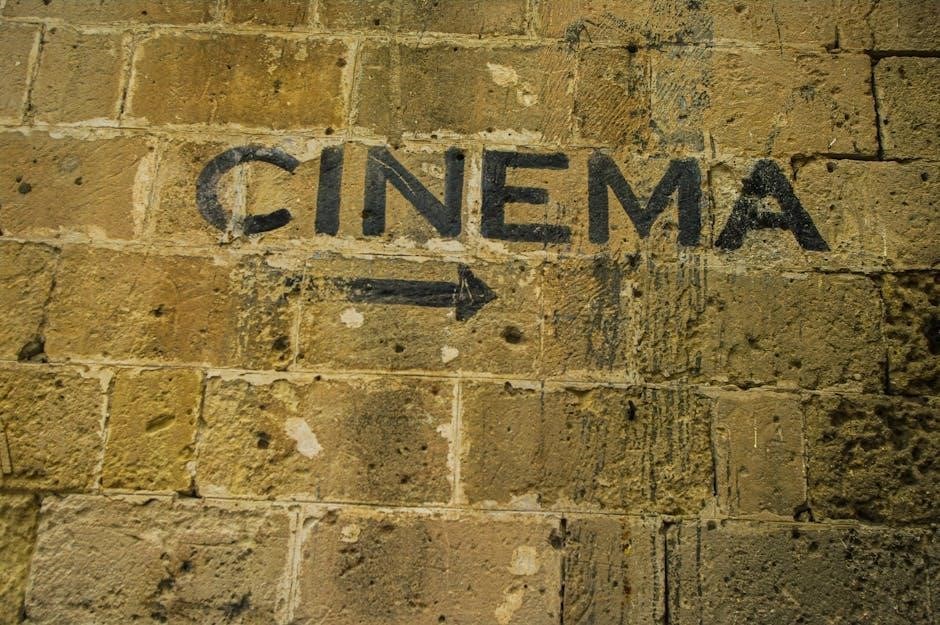
A Short Guide to Writing About Art by Sylvan Barnet: Article Plan
This guide outlines the structure and key components of Barnet’s renowned guide, offering a comprehensive roadmap for writing about art effectively and persuasively.
-
The Importance of Analysis in Art Writing
-
Types of Writing Assignments in Art
-
Style and Tone in Art Writing
-
Structure of an Art Essay
-
The Role of the Writer in Art Criticism
-
Sylvan Barnet’s Approach to Teaching Art Writing
-
Sample Essays and Case Studies
-
Writing About Different Art Forms
-
The Role of Research in Art Writing
-
Writing Exhibition Reviews
-
Writing Essay Examinations
-
The Author’s Background and Expertise
-
The Evolution of the Guide
-
Student Feedback and Reviews
This section introduces the fundamental principles of writing about art, guiding students to understand how to approach analyzing and expressing their thoughts clearly and effectively.
1.1 The Purpose of the Guide
Sylvan Barnet’s guide aims to help students master the skills of writing about art, providing clear directives and practical examples to enhance their analytical and expressive abilities in articulating their understanding of artworks effectively and persuasively.
1.2 Key Principles of Writing About Art
Barnet emphasizes clarity, focus, and evidence-based argumentation as foundational principles. He stresses the importance of understanding the artist’s intent, analyzing visual elements, and connecting observations to broader themes. The guide also highlights the need for a persuasive tone, ensuring readers can follow and engage with the writer’s interpretation of the artwork.
The Importance of Analysis in Art Writing
Analysis is central to art writing, involving close examination of composition, symbols, and themes to transform observations into meaningful insights.
2.1 Methods of Analyzing Artworks
Barnet emphasizes analyzing artworks through formal analysis, iconography, and contextual studies. Students learn to examine composition, symbols, and themes, breaking down elements like line, color, and form. This systematic approach helps in understanding the artwork’s structure and meaning, enabling critical evaluation and persuasive writing about art.
2.2 Techniques for Effective Art Analysis
Barnet advocates for clear, descriptive writing and evidence-based arguments. Techniques include analyzing formal elements, interpreting symbols, and comparing styles. Students are encouraged to describe artworks thoroughly, identify themes, and support observations with specific details. These methods ensure insightful, well-supported analysis, helping readers understand the artwork’s significance and the writer’s perspective effectively.

Types of Writing Assignments in Art
This section explores various writing assignments in art, including formal analysis, comparison, and research papers. Barnet provides guidance on each type, ensuring comprehensive coverage.
3.1 Formal Analysis
Formal analysis focuses on describing and interpreting the visual elements of an artwork, such as composition, color, and form. Barnet emphasizes the importance of close observation and evidence-based analysis to support interpretations. This approach helps students develop critical thinking and communication skills, essential for effective art writing. Clarity and persuasiveness are key to conveying the artwork’s significance.
3.2 Comparison and Contrast
Comparison and contrast involve analyzing similarities and differences between artworks to explore themes, styles, or historical contexts. Barnet guides students to focus on elements like composition, color, and technique. This method enhances understanding of artistic decisions and broader cultural or artistic movements, helping writers develop nuanced arguments and insights into the works being compared.

Style and Tone in Art Writing
This section explores developing a clear, persuasive writing style and maintaining an academic tone, emphasizing clarity and engaging arguments to effectively communicate art analysis.
4.1 Developing a Clear and Persuasive Style
Barnet emphasizes the importance of clarity and precision in art writing. Students are encouraged to use clear, concise language to convey their ideas effectively. Active voice and strong verbs are recommended to enhance persuasiveness. Avoiding jargon and overly complex sentences ensures readability. The goal is to engage the reader while maintaining a logical and coherent argument structure in every paragraph.
4.2 Maintaining an Academic Tone
Barnet underscores the necessity of maintaining an academic tone in art writing. This involves avoiding informal language and personal opinions. Objective analysis and evidence-based arguments are crucial. The use of proper terminology and respectful language ensures professionalism. By adhering to these guidelines, writers can produce work that is both credible and engaging, fostering a deeper understanding of the artwork being discussed. This approach enhances the overall quality of the essay, making it suitable for academic settings and rigorous critique.

Structure of an Art Essay
A well-structured art essay begins with an introduction and thesis statement, followed by body paragraphs supported by evidence, and concludes with a cohesive summary of findings.
The introduction sets the stage with a compelling hook, providing context about the artwork, artist, or movement. A clear, focused thesis statement emerges, guiding the essay’s direction and argument. Barnet emphasizes the importance of a strong thesis to anchor the analysis and ensure the essay remains persuasive and cohesive throughout.
5.2 Body Paragraphs and Evidence
Body paragraphs present detailed analysis, supported by specific evidence from the artwork. Each paragraph focuses on a single idea, with descriptions and interpretations tied to the thesis. Barnet stresses the importance of clear, logical reasoning and the use of visual details to build a persuasive argument, ensuring each paragraph contributes meaningfully to the essay’s overall analysis and conclusion.
The Role of the Writer in Art Criticism
The writer’s role is to clarify and interpret artworks, ensuring the audience understands the artist’s intent and the work’s significance through clear, logical explanations.
6.1 Making the Reader Understand the Art
Barnet emphasizes the writer’s responsibility to clarify and interpret artworks, ensuring the audience grasps the artist’s intent and the work’s significance. This involves using clear, logical explanations and avoiding jargon. The writer must bridge the gap between the artwork and the viewer, making complex ideas accessible through descriptive language and structured analysis.
6.2 Ensuring Clarity in Argumentation
Barnet stresses the importance of clear, logical argumentation to convey ideas persuasively. Writers should avoid jargon and ensure each sentence builds upon the last, guiding the reader through the analysis. Clarity strengthens credibility, making the writer’s interpretation of the artwork accessible and convincing to the audience.
Sylvan Barnet’s Approach to Teaching Art Writing
Barnet’s approach emphasizes breaking down the writing process into manageable steps, offering practical exercises and examples to help students develop their critical thinking and writing skills effectively.
7.1 Breaking Down the Writing Process
Barnet simplifies complex tasks by dividing them into clear, manageable steps. He provides practical exercises and analysis techniques to help students understand and describe artworks effectively. This approach ensures clarity, organization, and logical progression in their writing, making the process less intimidating and more achievable for learners at all levels.
7.2 Providing Practical Exercises and Examples
Barnet’s guide includes practical exercises and real examples to enhance learning. Students benefit from analyzing sample essays and completing structured tasks that cover description, analysis, and comparison. These exercises help bridge theory and practice, enabling students to apply concepts effectively and refine their writing skills through hands-on experience.

Sample Essays and Case Studies
The guide includes sample essays and case studies, providing practical examples of effective art writing. These resources help students analyze works and develop their writing skills.
8.1 Analyzing Student Examples
Analyzing student examples is crucial for understanding effective art writing strategies. Barnet provides samples that demonstrate how to describe, analyze, and interpret artworks. These examples highlight common pitfalls and best practices, offering learners practical insights. By studying these, students can refine their skills in articulating observations and constructing persuasive arguments about art.
8.2 Learning from Successful Essays
Sylvan Barnet’s guide includes successful essays as models for students to learn from. These essays demonstrate strong analysis, clear argumentation, and effective use of evidence. By studying these examples, students can identify key strategies for articulating their observations and constructing persuasive arguments. This helps them understand what makes an essay compelling and how to apply these techniques in their own writing.

Writing About Different Art Forms
Barnet’s guide covers various art forms, including paintings, sculptures, photographs, and installations, providing specific techniques for analyzing and describing each medium effectively in writing.
9.1 Describing Paintings and Sculptures
Barnet emphasizes the importance of vivid, detailed descriptions when writing about paintings and sculptures. He encourages students to analyze composition, color, texture, and symbolism in paintings, while focusing on form, material, and spatial relationships in sculptures. Practical exercises and examples guide learners to articulate their observations clearly and persuasively, ensuring a deeper understanding of the artwork.
9.2 Analyzing Photographs and Installations
Barnet provides strategies for analyzing photographs and installations, focusing on composition, lighting, and subject matter in photography. For installations, he emphasizes understanding spatial relationships, viewer interaction, and conceptual themes. Practical exercises help students articulate their observations and interpretations, ensuring a comprehensive analysis of these contemporary art forms and their unique challenges.

The Role of Research in Art Writing
Research is crucial in art writing, enabling deep analysis and contextual understanding. It involves gathering artist information and using historical context to enrich interpretations and arguments effectively.
10.1 Gathering Information About the Artist
Gathering information about the artist is essential for contextualizing their work. This includes biographical details, historical context, and artistic movements they were part of. Understanding the artist’s background provides deeper insights into their motivations and stylistic choices, enabling more nuanced analysis. Barnet emphasizes the importance of this step to ground interpretations in factual knowledge, ensuring writing is informed and credible.
10.2 Using Art Historical Context
Using art historical context enriches analysis by situating artworks within their cultural, social, and historical frameworks. Barnet emphasizes understanding the era, movements, and influences that shaped the artist’s work. This approach helps readers connect themes, styles, and techniques to broader artistic trends, making interpretations more informed and meaningful. Contextualizing art enhances clarity and depth in writing, aligning with Barnet’s methodical approach to art analysis.

Writing Exhibition Reviews
This section focuses on crafting insightful reviews of art exhibitions, guiding readers to describe and evaluate the display, highlighting key works and the overall impact effectively.
11.1 Describing the Exhibition
Barnet emphasizes the importance of vividly describing the exhibition, focusing on layout, key artworks, and overarching themes. Readers should be able to visualize the display through detailed observations, noting the arrangement of pieces and how they contribute to the exhibition’s narrative or aesthetic. This section teaches students to capture the essence of the show, ensuring clarity and engagement for their audience.
11;2 Evaluating the Overall Impact
Evaluating the overall impact involves assessing the exhibition’s ability to engage and communicate its message. Consider its coherence, emotional resonance, and intellectual stimulation. Provide evidence-based judgments on how effectively the exhibition achieves its goals, supported by specific examples and audience reactions, ensuring a balanced perspective that reflects both strengths and weaknesses.
Writing Essay Examinations
This section provides strategies for preparing and structuring exam essays, emphasizing clear and persuasive writing to address art historical questions effectively.
12.1 Preparing for Art History Exams
Barnet emphasizes understanding key artworks, artists, and historical contexts. Students should practice analyzing images, organizing notes, and studying major art movements. Regular review of sample essays and past exam questions helps build confidence and clarity in writing. Focus on developing a structured approach to address prompts effectively within time constraints during exams.
12.2 Structuring Exam Essays
Barnet advises starting with a clear thesis statement, followed by focused paragraphs. Each paragraph should address a specific aspect of the question, supported by relevant examples and analysis. Use transitional phrases for coherence and conclude with a summary reinforcing the thesis. Ensure clarity, conciseness, and logical flow to effectively communicate arguments within the time constraints of an exam setting.

The Author’s Background and Expertise
Sylvan Barnet, a renowned literary critic and Shakespearean scholar, taught at Tufts University. His academic credentials and extensive experience make him an authoritative voice in art education.
13;1 Sylvan Barnet’s Academic Credentials
Sylvan Barnet was a distinguished scholar and educator, holding a prominent position at Tufts University. His expertise spanned literary criticism and Shakespearean studies, equipping him to author influential texts like A Short Guide to Writing About Art. His academic background and teaching experience solidified his authority in art education and critical analysis.
13.2 His Contributions to Art Education
Sylvan Barnet revolutionized art education with his guide, empowering students to master art writing. His best-selling text demystifies complex concepts, offering clear, practical advice. By focusing on formal analysis, comparison, and research, Barnet’s approach bridges theory and practice. His emphasis on clarity and persuasion has made the guide a cornerstone in art education, benefiting countless learners and educators alike.
The Evolution of the Guide
Sylvan Barnet’s guide has evolved through multiple editions, adapting to contemporary art trends and educational needs, ensuring its relevance for modern students and educators.
14.1 Changes in Different Editions
Each edition of Barnet’s guide has introduced updates to address modern art trends, expanded coverage of digital media, and enhanced clarity in writing strategies, ensuring relevance and comprehensiveness for contemporary learners.
14.2 Adaptations to Modern Art Trends
Recent editions incorporate discussions on contemporary art forms like digital installations and photography, offering insights into analyzing modern artistic expressions. Barnet updates the guide to reflect evolving trends, ensuring students can effectively engage with and write about current art movements and multimedia works.

Student Feedback and Reviews
Students praise Barnet’s guide for its clarity and practical advice, noting its effectiveness in improving their art writing skills through structured approaches and sample essays.
15.1 Common Praise for the Guide
Students and educators widely commend Barnet’s guide for its clarity and structured approach. Many highlight its effectiveness in improving art writing skills through practical examples and clear directives. The inclusion of sample essays and analytical techniques has been particularly praised for helping students grasp complex concepts. Its accessibility and comprehensive coverage make it a valuable resource for art writing courses.
15.2 Criticisms and Suggestions
Some critics note the guide could benefit from more in-depth analysis of contemporary art trends. A few suggest enhancing visual examples to aid understanding. Additionally, incorporating diverse artistic perspectives could broaden its appeal. These suggestions aim to enhance the guide’s relevance and depth for modern art students and writers, ensuring it remains a valuable resource.
Barnet’s guide is a valuable resource for art writers, offering clear guidance and inspiration. It remains a foundational tool for students and enthusiasts alike.
16.1 Summarizing Key Takeaways
Barnet’s guide emphasizes the importance of clear, persuasive writing about art. It highlights the need for thorough analysis, effective structure, and a strong thesis. Students learn to describe, compare, and critique artworks while maintaining an academic tone. The book provides practical advice, sample essays, and exercises, making it an essential resource for art writers at all levels.
16.2 Encouragement for Aspiring Art Writers
Aspiring art writers are urged to embrace their passion for art and develop their critical voice. Barnet’s guide offers practical tools and inspiration, encouraging students to refine their skills through practice and dedication. By focusing on clear expression and thoughtful analysis, writers can confidently share their insights, contributing meaningfully to the discourse on art and its significance.
